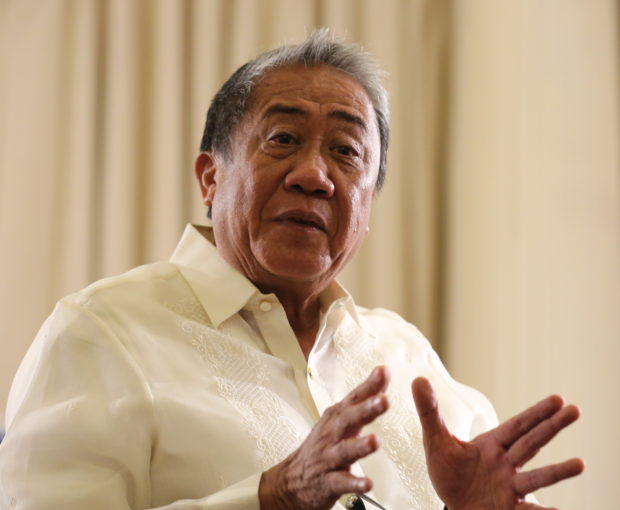
FILE PHOTO: DOTr Secretary Arthur Tugade. INQUIRER/ Joan Bondoc
MANILA, Philippines – The Metro Manila Subway Project (MMSP), the country’s first underground railway system, is now 26 percent complete, and is targeted for partial operability in the first quarter of 2022.
The MMSP has a total of 11 contract packages (CP), broken down into seven civil works, two rolling stock and electromechanical systems, and two advance works CPs.
According to Department of Transportation (DOTr) Undersecretary for Railways TJ Batan, the MMSP has recorded an overall project completion status of 26% as of August 2021, while its partial operability segment is now 37% complete.
“The overall progress rate of the entire Metro Manila Subway Project is already 26%. Meanwhile, the Partial Operability Section, which includes the Philippine Railway Institute, East Valenzuela Station, and the MMSP’s Depot, is now 37%. Operations of the partial operability segment is targeted in the first quarter of 2022,” Batan said.
“The speed at which the MMSP is being built is also record-breaking, considering that the project’s loan agreement was only signed with the Japan International Cooperation Agency (JICA) in 2018,” Batan added.
Based on records, the JICA-funded Jakarta Metro had its loan agreement signed in 2006, and had its first civil works contract package signed in 2013. The line started full operations in 2019. In contrast, the first JICA loan agreement for the MMSP was signed in 2018, its first civil works contract package was signed in 2019, and full operations are being eyed for 2027.
Considering the impact of the COVID-19 pandemic, the MMSP remains one of the fastest JICA-funded subway projects in the Asia-Pacific region.
Meanwhile, Transportation Secretary Art Tugade said the DOTr has made it a point to closely monitor the work progress of all railway projects, especially the Metro Manila Subway Project, to show the public that these are projects in progress.
“Previously, the progress or completion rate for design and procurement works, and right-of-way acquisition, were not numerically monitored. But I said, if you cannot measure it, it does not exist,” Tugade said.
“And that is why since 2019, the DOTr has been numerically monitoring and measuring progress in the implementation of its railway projects, not just for construction progress, but also for the progress of design, procurement, and right-of-way acquisition works,” Tugade added.
RELATED STORY:
DOTr: Metro Manila Subway now 26% complete

